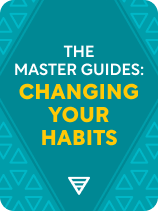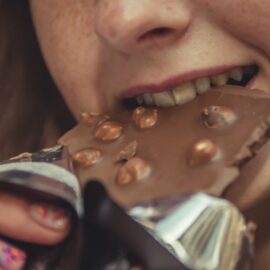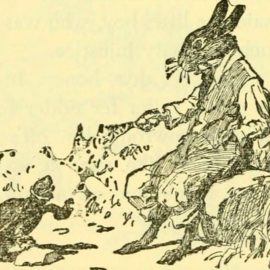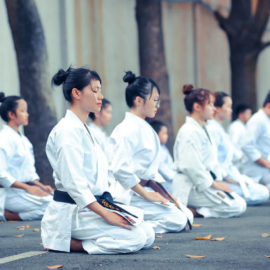

This article is an excerpt from the Shortform book guide to "The Master Guides: Changing Your Habits" by Shortform. Shortform has the world's best summaries and analyses of books you should be reading.
Like this article? Sign up for a free trial here.
How do habits form? What is the biological program of a habit?
A habit is something you do without thinking because the behavior is programmed into your brain as an automatic response. There are several components to this biological “program”: the cue, the routine, the reward, the craving, repetition, and the belief.
Keep reading to learn about the habit-creation process.
1. The Cue
How do habits form initially? They first start with a cue. The cue is what starts the automatic program running in your brain. Cues are also called “prompts” or “triggers.” They can be either external (something in your environment) or internal (your thoughts or emotions). For example, say you have a habit of drinking coffee in the morning. This habit might have an external cue, such as the smell of coffee from other coffee drinkers in the office. Or it might have an internal cue, such as feeling drowsy in the morning.
2. The Routine
The routine is what you do automatically when the program runs. In our coffee example, the routine might consist of getting your coffee cup, going to the coffee maker in the break room, and pouring yourself a cup of coffee.
3. The Reward
The reward is a positive sensation that your brain associates with the routine or with completing the routine. The reward gives your brain a reason to execute the routine. It could be a pleasurable experience, or it could be relief from something negative such as pain or fear. Either way, to be part of the habit, the reward must be immediate. This is because your brain processes things that happen later on separately from the habit “program,” even if they’re direct consequences of the routine. So behaviors that generate immediate pleasure or relief but have negative long-term consequences lead to bad habits.
For example, if you drink a cup of coffee and it immediately makes you feel more alert and energetic, this will reinforce your coffee-drinking habit. On the other hand, suppose you try to address your fatigue problem a different way: You work through lunch so you can go home an hour earlier and get an extra hour of sleep. The extra sleep makes you feel more alert and energetic the next day. The reward is the same, but the delay between the routine of working through lunch and the reward of getting an extra hour of sleep is probably too long for it to make working through your lunch break habit-forming.
According to Nir Eyal, the reward must also be variable—in other words, it shouldn’t be predictable. This is especially true for rewards that suffer from diminishing returns, meaning they’re less rewarding the more times you receive them. For example, suppose you have a phone app that displays a joke whenever you open it. If it always gives you the same joke, the app probably won’t be habit-forming because there are rapidly diminishing returns to hearing the same joke over and over. But if it displays a different joke each time you click on it (a variable reward), then the app is more likely to be habit-forming.
On the other hand, a reward like relief from fear or discomfort remains potent every time the fear or discomfort is present, so you don’t need to vary it.
4. The Craving
The craving is a powerful urge to execute the routine in anticipation of the reward. Some authors, such as Clear, list this as an essential component of habits. They argue that the cue triggers the craving, which in turn causes you to execute the routine. Others, such as Oakley, leave out the craving step, stating that you perform the routine automatically in response to the cue.
Let’s return to our example of a coffee-drinking habit and assume it’s the smell of coffee that constitutes the cue. Any time you smell coffee, you’ll start to crave coffee, and the craving will continue even if you consciously decide not to get any coffee today.
5. Repetition
Repetition is necessary for habits to form. This is partly because, as we said before, your brain executes the routine in anticipation of the reward—to anticipate what the outcome of a certain behavior feels like, you must have done it before. You also have to do something many times before the movements or other actions involved can become automatic. In other words, it takes time and repetition for your brain to build the routine for the habit program.
Eyal argues that habit formation is not just a matter of repetition, but of investment: The more time, energy, and value you put into something, the stronger your habitual attachment to it becomes. Investment gives you something to lose (or cease to benefit from) if you were to cease engaging in the habit, and so fear of loss makes the habit stronger.
For example, if you have a habit of using a social media app, over time, you’ll make a lot of posts and build up your network. Or, if you have a long-standing habit of drinking coffee, maybe you’ve invested a lot of time in finding which blends taste the best and which coffee makers work the best.
6. The Belief
According to Oakley, the belief is an additional component of the habit program in your brain. She observes that every habit tends to be grounded in something you believe about yourself or about the world you live in.
For example, maybe you have a habit of snacking when you’re under stress, and you believe that having something to munch on helps you stay calm. This habit could never develop without the underlying belief: You wouldn’t have started snacking to relieve stress if you didn’t believe snacking could relieve stress.
Most other authors don’t consider underlying beliefs to be part of the habit itself. However, they would probably concede that your underlying beliefs do affect your habits because these beliefs influence what behaviors you’re willing to do or repeat and color how you perceive the reward.

———End of Preview———
Like what you just read? Read the rest of the world's best book summary and analysis of Shortform's "The Master Guides: Changing Your Habits" at Shortform.
Here's what you'll find in our full The Master Guides: Changing Your Habits summary:
- How even the smallest habit improvements can have a big impact on your life
- Advice from the top five best-selling authors on changing your habits
- How to identify the behaviors that keep you stuck in the same patterns






